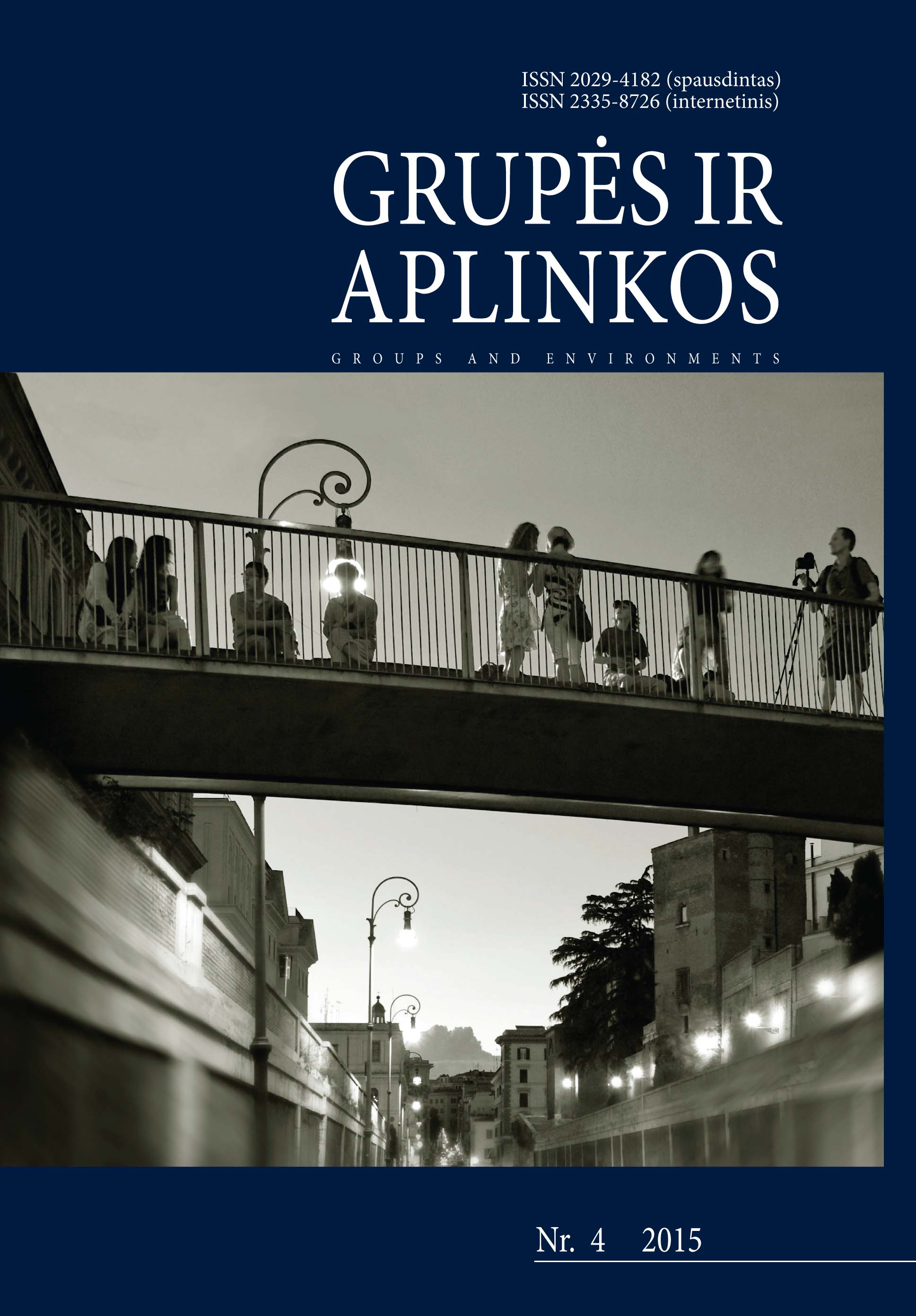Depresyviojo metalo subkultūra: kultūrinė raiška bei socialinės organizacijos principai
Depressive Metal Subculture: Cultural Expression and Principles of Social Organisation
Author(s): Eglė JurčiutėSubject(s): Anthropology
Published by: Vytauto Didžiojo Universitetas
Keywords: Youth culture; Alternative youth culture; Subculture; Metal culture
Summary/Abstract: Straipsnyje pristatomas Švedijos depresyviojo metalo muzikos kūrėjų ir gerbėjų neformalios organizacijos tyrimas, atliktas 2012 m. įvairiose Švedijos vietovėse. Analizuojamos dvi pagrin¬dinės depresyviojo metalo subkultūros meninės raiškos priemonės – muzika ir tapyba; atsklei¬džiami psichologiniai subkultūros dalyvių bruožai ir jų subkultūrinio identiteto konstravimas per santykį su kitais metalo muzikos subkultūros nariais bei visuomene, pažymint gilią depre¬syviojo metalo subkultūros dalyvių socialinę ir kultūrinę atskirtį. Atskleidžiant neformalią sub¬kultūros organizaciją, analizuojami internetiniai ir realūs ryšiai tinkle, kuriais subkultūros nariai perduoda vieni kitiems informaciją, idėjas ir palaiko emociškai. Depresyviojo metalo subkul¬tūros tyrimai padeda suprasti nelengvai prieinamas visuomenės grupes, susiskaidymą, dalies dabarties žmonių egzistencinę krizę.The article aims to analyse the main features of the depressive metal subculture and to consider what cultural elements and social relations influence contemporary depressive metal subcul¬ture. A related goal is to discuss how this phenomenon can be conceptualised. The discussion, based on fieldwork and other research data, focuses on the construction and expression of cul¬tural identity by musicians and fans of depressive metal. The analysis of the depressive metal subculture looks at the principles of followers’ worldview, artistic creativity and the creation of cultural surroundings. These aspects are addressed using the emic approach. The context of the subculture’s activities, the informal forms of social organisation and the relations between musi¬cians and fans in the context of globalisation are also considered. This is related to the analysis of identity construction by members of the depressive metal subculture via their relations with other metal forms of music fans and contemporary society at large. The research methodology includes participant observation, semi-structured interviews and informal conversations with informants. These were conducted as part of the fieldwork in Sweden between June 7, 2012, and September 7, 2012. The depressive metal subculture includes features that are typical to modern subcultures: the emphasis on values and beliefs, negative ap¬proach to official Medias and emphasis on authenticity in self-perception, among others. The research demonstrated that fans and musicians of depressive metal tend to identify with depressive metal subculture as part of global metal culture. They regard themselves as belong¬ing to the parent metal culture, though they also recognise some cultural and social differences. The paper argues that fans and creators of the depressive metal music differ from the rest of the metal community in the expression of emotions and the treatment of themes like suicide, psychological disorder and despair, to mention but a few. The treatment of the latter aspects dif¬ferentiates fans and musicians of depressive metal from the rigidly exoteric and macho attitude held by representatives of traditional heavy metal music. The main form of cultural expression of the depressive metal subculture is music and paint¬ing. Music, produced and performed by depressive metal groups, differs from music created within other trends of metal culture because of the introspective nature of the depressive metal subculture. The differences are manifested in lyrics of the songs and in the way of performance. The singing includes frequent cries and shrieks, which express the despair and torment felt by the performer. In painting, like in music, the representatives of the depressive metal subculture use artistic devices such as contrasts and ambiance to convey their deepest inner states. Depressive metal as a subculture is attracting a growing number of followers, mainly young and intelligent outcasts seeking de-identification with their societies and the imposed moral or ‘ethical’ conventions intended to restrain base desires. In this sense, depressive metal is a counter reaction to pre-imposed cultural dogmas and a celebration of free will as well as social anarchism. Depressive metalheads give new meaning to self-destructive behaviour. Self-mutilation and drugs are regarded as a pathway to self-discovery through transcendence of personal limita¬tions. Such modes of behaviour are considered as a form of meditation whereas scarring the body is treated as a form of subcultural capital that breaks the taboos of society and symbol¬ises stamina and the will to challenge oneself. The subculture opposes norms of society and constraints of state institutions. Depressive metal groups do not depend on outside material resources for support. Rather, they support themselves; their members live in definable commu¬nities. Real-life and virtual networks are important in maintaining relations among musicians, supporters and fans. Depressive metal fans and musicians can be regarded as socially awkward, and their behav¬iour can be associated with psychological problems regarded as both causes and results of seclu¬sion from society. It remains our conviction that a more in-depth research on this subculture needs to be done, and that medical anthropology and cross-cultural psychiatry would have an important place in this inquiry.
Journal: Grupės ir aplinkos
- Issue Year: 2015
- Issue No: 4
- Page Range: 27-47
- Page Count: 21
- Language: Lithuanian

